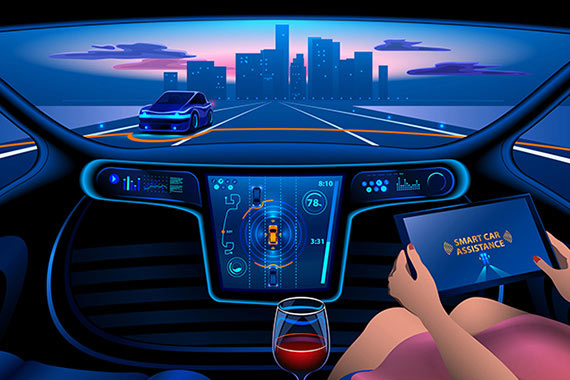For an automobile to be autonomous, it needs to be continuously aware of its surroundings—first, by perceiving (identifying and classifying information) and then acting on the information through the autonomous/computer control of the vehicle. Autonomous vehicles require safe, secure, and highly responsive solutions which need to be able to make split-second decisions based on a detailed understanding of the driving environment. Understanding the driving environment requires an enormous amount of data to be captured by myriad different sensors across the car, which is then processed by the vehicle's autonomous driving computer system.


For the vehicle to be truly capable of driving without user control, an extensive amount of training must be initially undertaken for the Artificial Intelligence (AI) network to understand how to see, understand what it's seeing, and make the right decisions in any imaginable traffic situation. The compute performance of the autonomous car is on par with some of the highest performance platforms that were only possible just a few years ago.
The autonomous vehicle is projected to contain more lines of code than any other software platform that has been created to date. By 2020, the typical vehicle is expected to contain more than 300 million lines of code and will contain more than 1 TB (terabytes) of storage and will require memory bandwidth of more than 1 TB per second to support the compute performance necessary for autonomous driving platforms.
A self-driving car's AI system requires a continuous, uninterrupted stream of data and instructions in order to make real-time decisions based on complex data sets. Successful self-driving vehicles exist on the road today, however the success of many of these early vehicles is the result of repeatedly driving the same route consistently over many days, where they learn every detail of the route and generate high-resolution maps that are then used as a key part of the self-navigation system.
With less reliance on needing to recognize the route, the attention of the autonomous computer can be paid to traffic, pedestrians and the other potential real-time hazards. This generally restricted range of operation is referred to as geo-fencing, and reflects the approach that early self-driving vehicles are embracing in deploying vehicles that are truly driverless. While geo-fencing can lead to a solution that can work over a limited route, an autonomous vehicle with heavy reliance on geo-fencing in one part of the world may not function as well in another.
Under the influence of self-driving, many industries have been rapidly developed. As connectors are necessary for system equipment, the demand will also increase.Yeahui is a connector supplier with 11 years of experience in developing high quality connectors and wiring harnesses. wo have many types of products, including obd connector, circular connector, agricultural connector and so on.We can meet the requirements of various customers. Feel free to learn more about connectors or buy our connectors,looking forward to your message.
More about self-driving(Artificial Intelligence Drives Autonomous Cars).


没有评论:
发表评论